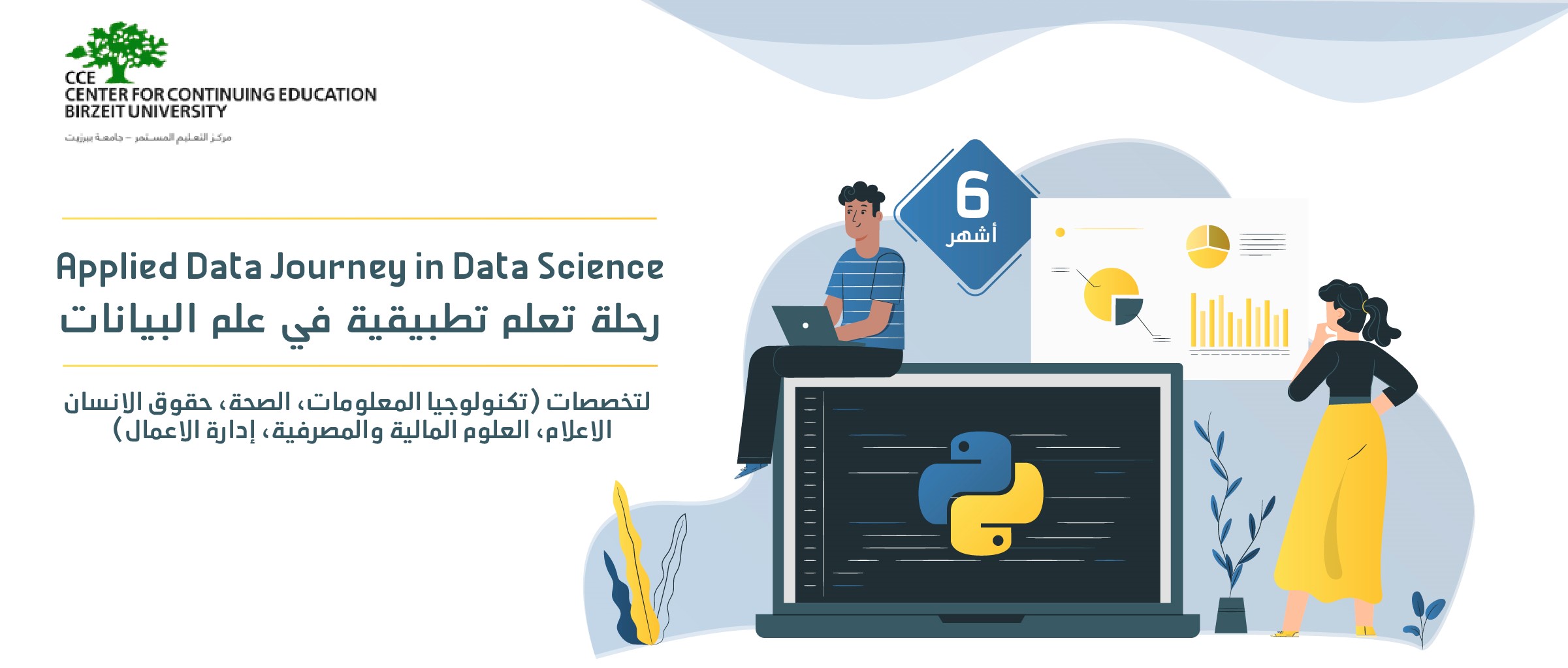Deadline for application submission was 16th of February 2021.
The Training Courses:
The program consists of two interrelated routes; one is for the Information Technology Major, and the other is for all other majors. It includes the following courses:
Courses in the "Applied Multidisciplinary Learning Journey in Data Science" Program
Introduction to Data
Introduction to Python (for IT)
Introduction to Python (Non-IT)
Data Analysis ( for IT + Non-IT)
Data Management Plan (DMP)
Machine Learning
Big Data for Non-IT
Big Data for IT
Conditions of Enrollment for IT Graduates:
- Good grades or practical experience in (Algorithms & Design)
- Good grades or practical experience in (Data Structure)
- Knowledge in software engineering
- Knowledge in (Web and Mobile Developments)
- Prepared to work in groups of people from different educational fields, to execute practical projects
Conditions of Enrollment for other Majors:
- Deep knowledge or practical experience in his/her major.
- Passionate about merging data science with their major or work.
- Prepared to work within groups of people from different educational fields, to execute practical projects. Those who are passionate about entrepreneur startup projects are preferred.
- Able to read and write in English.








